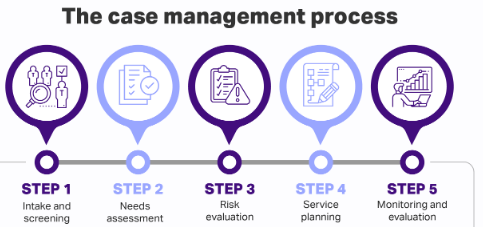
Common Challenges When Implementing Case Management Software in Human Services
It always starts with good intentions.
You find the perfect platform. The demo was seamless. The sales pitch promised it all—fewer spreadsheets, more visibility, easier compliance.
You get the green light. Everyone’s excited. And then… things get sticky.
Because while the right human services case management software can transform workflows, boost accountability, and improve client outcomes—it’s not always smooth sailing on the road to implementation.
Let’s talk about the friction points. The quiet hurdles. The stuff no one wants to admit until they’re already in the thick of it.
If you need to know more, you can see further at Casebook.
Challenge #1: “One Size Fits None”
Human services agencies are not all built the same.
One focuses on youth development. Another specializes in behavioral health. A third supports survivors of domestic violence.
If your software vendor treats every organization like a carbon copy, the result is a rigid system that doesn’t reflect your real-world workflows.
The fix? Look for platforms that are:
- Configurable, not just customizable (meaning your staff can adjust forms and flows without calling IT).
- Built for multi-program use, so one tool can flex to fit different departments.
- Able to grow and shift as your agency takes on new contracts or funding sources.
Because your mission isn’t static—your tools shouldn’t be either.
Challenge #2: Staff Buy-In Is… Not Guaranteed
Here’s the thing: people don’t resist technology. They resist frustration.
If your team has spent years duct-taping spreadsheets and legacy databases, they’re not just skeptical—they’re exhausted.
That’s why implementation often hits a wall after go-live:
- Workflows feel unfamiliar
- Interfaces aren’t intuitive
- Staff feel unheard in the configuration process
To avoid mutiny, focus on:
- Involving end users early, especially front-line staff
- Training that reflects actual use cases, not just generic modules
- Iterative feedback loops, so the platform can evolve alongside your team
Tech adoption is emotional. Acknowledge that, and your rollout goes smoother.
Challenge #3: Migrating Legacy Data
Nothing kills momentum faster than a messy migration.
You’ve got data from five systems, three decades, and a few random flash drives.
It’s incomplete. Inconsistent. And critical.
The danger? Either leaving valuable records behind—or pulling in bad data that pollutes your new system from day one.
Best practices here include:
- Auditing your data before migration
- Cleaning and mapping fields for consistency
- Running parallel systems temporarily (yes, it’s tedious—but often necessary)
- Working with a vendor who gets this and doesn’t treat it like a checkbox
Your new system is only as good as the data you bring with you.
See also: Netherlands Visit Visa: Things to Know
Challenge #4: Reporting Doesn’t Just “Happen”
Sure, every platform promises reporting dashboards and “real-time insights.”
But reporting needs structure.
Too often, teams realize—after the fact—that they didn’t define what success looks like, or how to track it.
That leads to:
- Outcome fields left blank
- Reports that don’t match funder requirements
- Duplicate tracking in spreadsheets
The move? Build reporting goals into your configuration phase. Ask:
- What outcomes matter to us—and to our funders?
- What do we need to know monthly, quarterly, and annually?
- Are we collecting the right data to tell our story?
If you bake this into setup, you won’t be scrambling later.
Challenge #5: Security and Compliance Are Non-Negotiable
Human services deals with some of the most sensitive data out there.
That means your software needs to go beyond simple logins and password resets.
Ask your vendor about:
- HIPAA, FERPA, CJIS compliance (depending on your service area)
- Role-based access controls to limit who sees what
- Audit trails for accountability
- Data encryption and cloud security for peace of mind
Because trust isn’t just earned in the field—it’s built into your digital infrastructure too.
Final Word: Don’t Let the Challenges Scare You—Let Them Prepare You
Yes, implementing human services case management software takes time. Yes, it gets messy.
But when you expect the friction, you can design around it.
When you prepare for resistance, you can build trust.
When you clean your data, train your people, and choose a flexible system—you don’t just digitize your agency.
You elevate it.
And that’s worth every uncomfortable meeting, every field mapping session, and every user training video.
You’re not just buying software. You’re building capacity.
That’s the long game. And it’s one worth playing right.



